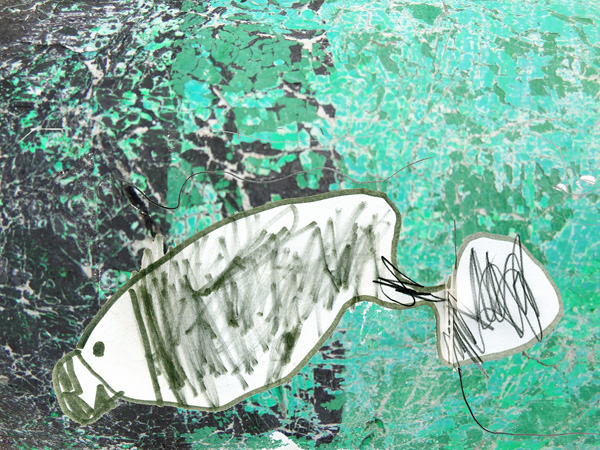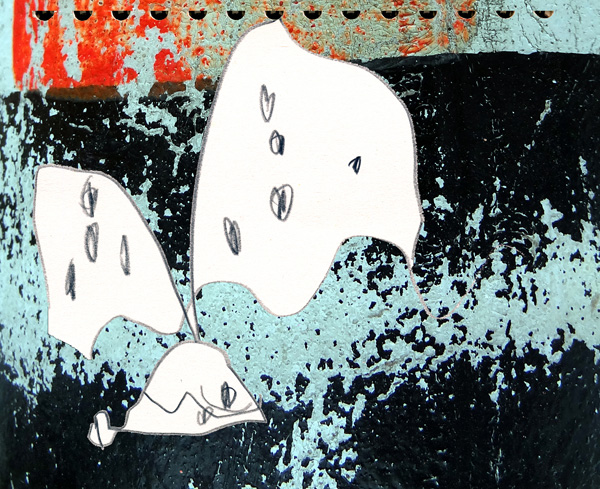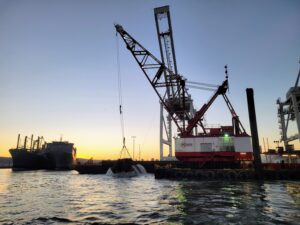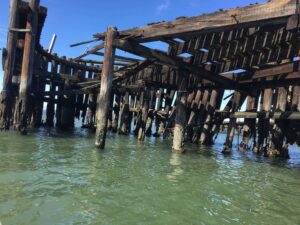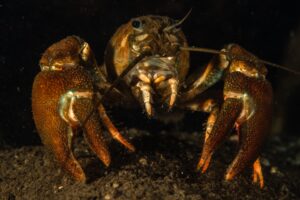Engaging kids in art is second nature to renowned environmental artist and mother Lee Lee, whose collaborative art tiles project, DEBRIS, sprung out of her concern for her newborn son Thatcher’s future in a world inundated by single-use plastics. We spoke with Lee about her projects with Bay Area organizations like the Marine Mammal Center that transform kids’ enthusiasm for the marine environment into artistic expression and awareness of our collective impact on the ocean.
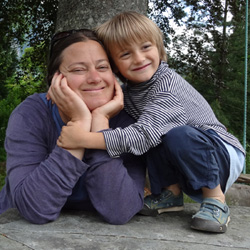
BN: What is your connection to the Bay Area?
LL: I just love it: I have family here, friends who moved here, and friends who work here. I love the way the mountains meet the ocean. I have a traditional familial connection to the ocean – my brother is a sea captain.
When I was a child growing up in Denver, my father worked six months out of the year in Vietnam, and San Francisco became one of his favorite places. He would stop there on his way to and from Vietnam. My family would stay with him, and both my parents were really good at setting us out to explore the world. We liked the forests, especially the really big redwoods.
BN: Where do you live now?
LL: I split my time between Denver and Taos.
BN: It looks like there was a major shift in your artwork in the ’90s. At that time it focused on war and genocide, which gave way to an emphasis on environmental concerns. Why?
LL: My son Thatcher was born. I vividly remember standing at a grave site in Srebrenica, in Bosnia. I had recently found out that I was pregnant, and I felt that I couldn’t give my work the kind of focus that it needed given its emotional challenges, along with those of pregnancy and motherhood.
When Thatcher was born, I became very concerned with his nourishment, which led me to explore issues of food justice. In turn, this led me to a deeper awareness of the burden that the chemicals used in modern agriculture place on our bodies, as well as the physical impact of consumer conveniences such as plastic.
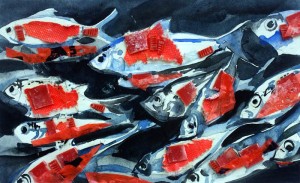
BN: How did DEBRIS begin?
LL: I began to conceptualize the project during an artist’s residency in Southern France in 2012.
BN: What is your intention and process in your work with plastic marine debris?
LL: When you look at typical images of the effects of plastic on the environment, you see a lot of grotesque images, full of decay, like birds being cut open or entangled in plastic. Those images can be too graphic for kids, so my process is to have people create images of animal species, photograph them, and send me the photos. I transfer the images onto plastic tiles, which I use in the installations. The process of photo transfer is imperfect and impermanent, so some of the image rubs away. The visual disintegration of the images represents the literal disintegration of the species. You can see examples at www.virtualvoices.org. Readers are welcome to send me their own images.
BN: Where do you get your materials from?
LL: The tiles I transfer the images onto are re-purposed foamcore. I work with several museums who would otherwise throw away these scraps after they mount installations.
The plastic used in the representations of marine life are trash-sourced from the sea and other waterways. My collaborators and I gather pieces during cleanups to share with workshops or classes who are making the representations. My family laughs at me for carrying an extra suitcase full of debris back from places like Maui or Maine, but I always do so I have ocean-sourced plastic to work with.
BN: What media do the artists use?
LL: There are many different ways people have incorporated plastic into their work. Sometimes they are drawings with plastic laid on top and photographed, like Thatcher’s Clownfish. One class made fish drawings, cut them out and put them into plastic bottles, which they installed at the Denver Aquarium. The kids in Haiti cut images out of worn tires with a chisel then paint them. I just led a workshop with debris from Maui, where kids pieced together fish entirely from the hard plastic ocean debris. For Thatcher’s whale and manatee, he drew a picture of each animal, then we worked together to digitally collage them with textures of lobster buoys that we had found washed ashore in Maine (we had taken photos of them before making sure they were properly disposed of).

BN: How do you determine what species to focus on, and what to do with the tiles?
LL: I follow the lead of whatever community I’m working with. They know much better than I what’s important to them, and how to share the images. They’re on the ground, engaging people in environmental issues on a long-term basis. For example, in the Bay Area I’ll be working with both Save our Shores and the Marine Mammal Center. Both are integrating the project as an educational tool.
The Marine Mammal Center is using the work in their summer camp program. Kids come for a week, they get out to the seashore, learn about the ecology there, learn about the rescue work, and they love to do hands-on projects. The Center will send me photos of marine life that is affected by plastic.
Save our Shores does a series of Earth Day activities, regular shoreline cleanups, and school visits. They’ll bring the project to all of those. They also have people create images at various tabling events, both letting people know what’s going on, and allowing them to directly participate in the process.
And next year in Point Reyes, I’ll be working with Gallery Route One as part of their With The Earth program. Leading up to that, teachers in Inverness will work on the project with their classes and send me some photos to mount on the tiles. I’ll follow their lead on what to do next.
BN: Your work defies categorization. Do you consider yourself an artist, an environmentalist, a humanitarian or an activist?
LL: All of the above, but mostly I’m an artist because I’m comfortable with visual language. Within that language, my main focus is social and environmental issues.
BN: What is your formal training in art?
LL: I have a BFA in Painting from the Rhode Island School of Design (1996). I loved the program, but had problems with the exclusivity of the established art world. I gained a great deal from my face-to-face experiences with artists around the world, in the places like Myanmar, Cuba, etc.
BN: What is your favorite aspect of this work?
LL: I think it’s the ability to connect with people who are not held in high regard, who are marginalized, and learn from their wisdom: the economically disadvantaged, those who bear the brunt of development. When I was in Haiti I was working with grandmothers. They are well loved but they’re not typically treated with respect. Drawing out the wisdom they held was the most important to me. I’m “successful” when connection happens.
BN: What is most difficult?
LL: Reaching out into communities that are not initially concerned with these subjects. It’s easy to preach to the choir. But how do you broaden that engagement with people who don’t walk in the circles that are concerned with social justice and the environment? Engagement is key.
BN: What is your favorite outdoor destination in the Bay Area?
LL: Point Reyes National Seashore.
BN: Many of our interviewees say so. What, specifically, do you like about that place?
LL: I love the marriage of agriculture and environmental conservation. I come from a place where there’s a lot of industrial agriculture, so I’ve seen how it impacts the environment. I have a respect for traditional agricultural practices. And I sense a strong effort to maintain a balance between agriculture and the environment. I love the whole area, from the quiet of Tomales Bay to the dramatic pounding of the Pacific Ocean, the tidepools, and the green rolling hills.
Learn More:
Readers are invited to view Lee’s DEBRIS project and participate via the web www.virtualvoices.org, via email, or on instagram @the_debris_project.
